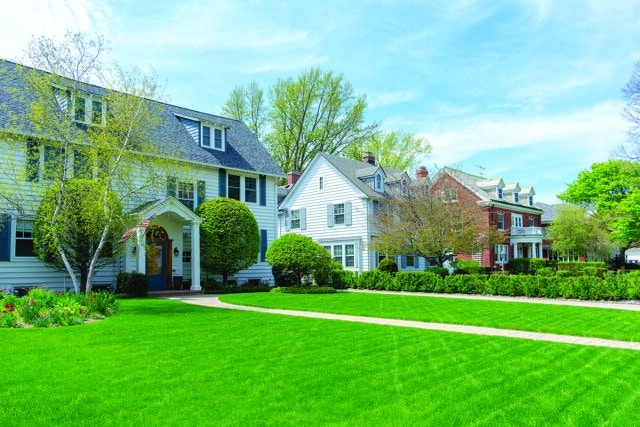Amid an ever-deepening housing crisis, Boston has become a hotbed of not just new construction and development, but also of a badly needed debate over the best ways to rein in runaway home prices and rents.
At a time when new residential construction still lags across the state, tens of thousands of new apartments and condos have gone up across the city over the past few years and tens of thousands more are on the way.
Meanwhile, there is a lively argument over how to increase the number of units affordable to middle– and working-class families amid a predominantly gold-plated housing boom, with city councilors like Lydia Edwards stirring the pot with in-depth and innovative proposals.
In her 59-page “Planning for Fair Housing” proposal, Edwards calls for leveraging decades–old fair housing laws as leverage to push developers to more units affordable to all city residents, not just the gilded few.
Yet, thanks to an quirk of history, what happens in Boston is likely to stay in Boston when it comes to potential solutions to the state’s increasingly crippling housing crisis.
Annexation’s Aftershocks
Wealthy Brookline homeowners voted down a proposal in 1873 in which Boston would have annexed what by then had become one of the city’s first suburbs.
It was a pivotal battle whose aftershocks can still be felt today, nearly 150 years later.
Up to that point, a fast-growing Boston had been steadily expanding its boundaries, absorbing a series of outlying villages and quasi-suburbs that are now familiar Hub neighborhoods like Roxbury, Brighton and Charlestown.
But Brookline’s decision to spurn Boston’s offer and go it alone all but brought this steady expansion of the city’s boundaries to a grinding halt with the exception of Boston’s annexation of Hyde Park in 1912.
Built on a narrow peninsula in the harbor, Boston grew slowly and steadily over the centuries by filling in marshland and harbor as well.
But that had begun to runs its course by the last quarter of the 19th century, with Boston by then also eyeing overland expansion as its population ballooned.
In the five years leading up to that fateful vote in Brookline, Boston had snapped up Roxbury, Dorchester, Brighton, West Roxbury and Charlestown.
Wealthy and suburban Brookline’s blocking of its further landward expansion by ensured that Boston, despite its growing population, would remain one of the smallest major cities in the country as measured by sheer landmass.
Boston today is just a little over 48 square miles, compared to over New York’s 300-plus square miles, Houston’s nearly 600 and Los Angeles’s 468. Even mid-tier cities like Charlotte, at 297 square miles, are seven or eight times bigger.
In a final throw of the dice, a 1912 proposal by Daniel Kiley, a state representative, would have annexed everything within 10 miles of the State House and boosted Boston’s landmass to a respectable 339 square miles. Needless to say, it never passed.

Boston suburbs’ preference for single-family homes on large lots and hostility towards multifamily housing has helped drive home prices skyward – and no one in Boston has been able to do much about it.
No Control Over Suburbs’ Path
Bottled up on its relatively tiny, harborside footprint, successive generations of Bostonians and their mayors had little to no say development patterns in the sprawling ring of suburbs that surrounds the city.
And develop they did, just on very different lines, with wealthy and even middle–class suburbs rejecting denser development in favor of ever–more expensive single–family homes on ever–bigger lots.
In recent decades, the trend has only intensified, with large-lot zoning in many suburbs both boxing out new apartment and condo construction and driving up home prices to insane levels by dramatically limiting the amount of new homes that get built and ensuring that those that do are outrageously expensive.
Boston mayors have pleaded for decades now for suburban leaders to help carry some the load when it comes to new housing construction, to little avail.
In a big move last year, Boston teamed up with more than a dozen suburbs, including Brookline, Newton and Arlington, on a pledge to build 185,000 new homes, condos and apartments by 2030.
Still, the chances of this initiative running aground grow exponentially when you are dealing with 14 other government bodies, some of which have had track records of succumbing to NIMBY pressure against new housing.
Boston Can Only Do So Much
All this bring us back to Edwards and her thoughtful proposal to battle de facto discrimination in new housing development.
The Boston city councilor wants the Boston Planning & Development Authority to draw upon the 1968 Fair Housing Act – and the Obama administration’s recent interpretation that ties it more directly into planning and zoning – to put pressure on developers to builder a much broader range of housing.
Edwards points to budding plans to building thousands of new homes, condos and apartments at Suffolk Downs as a place to start to ensure not only a greater number of affordable units than are now on the drawing boards, but also that they include three- and four-bedroom units attractive to growing families.
But while Boston can certainly improve its approach to new development, the communities that have been the most flagrant abusers of zoning and planning all lay outside the city’s artificially constrained geographic limits.

Scott Van Voorhis
Boston certainly has engaged in discriminatory planning practices in decades past as it leveled the West End, a diverse and low-income neighborhood, in the 1950s to make way for new, more upscale housing.
But there is nothing comparable to that in recent decades, with mayors, in both rhetoric and deed, having pushed to both boost housing construction and expand housing opportunity.
By contrast, the abuse of zoning and planning in the suburbs as a tool of discrimination has been outrageous. Nor does it require heavy sleuthing skills to uncover.
It may be 117 years old and counting, but maybe it’s time to dust off that 1912 annexation bill by old Dan Kiley and transform a good chunk of what is now called Greater Boston into what it should have been all along: Boston.
Scott Van Voorhis is Banker & Tradesman’s columnist; opinions expressed are his own. He may be reached at sbvanvoorhis@hotmail.com.




 |
| 


